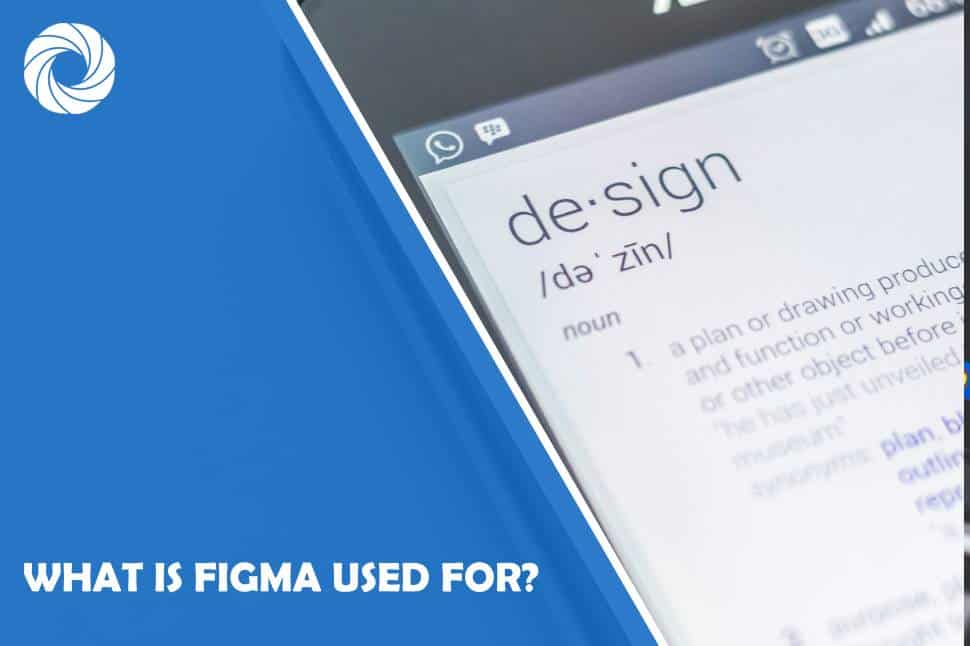In a world where digital design is the heartbeat of innovation, tools that empower creativity and collaboration are more essential than ever. Enter Figma—a cloud-based design platform that's transforming how teams conceptualize, create, and iterate on projects in real-time. Imagine a bustling virtual workspace where designers can sketch interfaces, prototype user experiences, and gather feedback from stakeholders all in one seamless environment. Whether you’re a seasoned designer or just starting your journey in the digital realm, Figma offers an array of features that cater to every level of expertise.
But what exactly makes Figma stand out among its competitors? Beyond its intuitive interface lies a powerful suite of collaborative tools that streamline workflows and enhance productivity. From wireframing web applications to designing intricate mobile interfaces, Figma has become synonymous with modern design thinking. Join us as we delve into the myriad ways this versatile platform is reshaping the landscape of design collaboration and discover why it’s become an indispensable resource for creatives across the globe.
What is Figma Used For?
Figma is a versatile tool primarily recognized for its capabilities in UI/UX design, but its true power lies in fostering collaboration across disciplines. Unlike traditional design software, Figma operates entirely in the browser, enabling real-time feedback and interaction among designers, developers, and stakeholders. This feature allows teams to work together seamlessly—no more version control issues or lengthy email threads. With everyone on the same canvas, ideas can evolve rapidly through direct input from all parties involved.
Moreover, Figma's plugin ecosystem enhances its functionality significantly. Designers can integrate tools that automate tasks like generating design assets or exporting code snippets directly into development environments. This not only increases productivity but also helps maintain consistency throughout a project. As brands pivot towards user-centric design methodologies, Figma's ability to create interactive prototypes enables designers to test user flows effectively before any code is written—a critical advantage that speeds up the development process while saving resources.
Beyond UI/UX projects, Figma has increasingly found a place in fields such as marketing and branding. Its features facilitate creating stunning visuals for campaigns and presentations with collaborative templates that boost brand coherence across platforms. Whether designing an app interface or crafting striking marketing materials, Figma empowers teams to turn creative concepts into tangible realities swiftly and collaboratively—all while celebrating the beauty of good design along the way.


Prototyping interactive experiences is a transformative process that allows designers to breathe life into their concepts. With Figma, teams can create dynamic, clickable prototypes that simulate real user interactions, enabling stakeholders to engage with and provide feedback on designs before they reach the development stage. This iterative cycle not only refines usability but also fosters collaboration across diverse teams—designers, product managers, and developers can converge around a shared vision, ultimately leading to more cohesive outcomes.
One of the standout features of Figma lies in its ability to facilitate real-time collaboration. As team members work simultaneously on the same prototype from anywhere in the world, they can instantly see adjustments and provide comments or suggestions without losing context. This degree of interactivity cultivates a culture of innovation where ideas evolve organically through collective input. Moreover, leveraging components and design systems within Figma streamlines this process even further; designers can ensure consistency while experimenting with variations efficiently.
Furthermore, prototyping opens avenues for user testing earlier than ever before. By deploying interactive versions of their products for selected audiences, designers can gather crucial insights into behavior patterns and preferences long before launch time. This data-driven approach not only minimizes costly revisions post-launch but also enhances user satisfaction by tailoring experiences directly based on feedback—the hallmark of customer-centric design thinking that places user needs at its core.
Collaborative Design Workflow
Collaborative design workflow in Figma transforms the traditional notion of teamwork by seamlessly integrating diverse perspectives into the creative process. This platform allows designers, developers, and stakeholders to work side by side in real time, breaking down geographical barriers and fostering a dynamic exchange of ideas. With features like live comments and version history, contributors can provide instant feedback or revert back to previous iterations without losing valuable contributions.
What sets Figma apart is its emphasis on transparency and inclusivity. By enabling non-designers to participate actively—whether through leaving comments directly on designs or sharing their thoughts during brainstorming sessions—Figma creates a space where everyone feels empowered to contribute. This not only enriches the design outcome but also cultivates a shared ownership that aligns teams towards common goals. Rather than siloed approaches typical of other tools, Figma’s collaborative environment encourages experimentation and innovation, ultimately leading to more user-centric solutions that resonate with end users’ needs.
Design Systems Management (DSM) is a pivotal aspect of modern design practices, particularly in environments that prioritize consistency and efficiency across multiple platforms. In the realm of tools like Figma, DSM allows teams to create and maintain a cohesive visual language that not only enhances user experience but also streamlines collaboration among designers, developers, and stakeholders. By establishing clear guidelines for typography, color palettes, and component libraries, teams can ensure that each design decision aligns with the brand’s identity while facilitating quicker iterations.
One emerging trend is integrating automation into design systems within Figma. With plugins and features that automate repetitive tasks—such as generating responsive layouts or updating component styles—designers can focus more on creativity rather than manual adjustments. This shift toward automation fosters an environment where innovation thrives; designers are empowered to experiment without fear of leaving substantial technical debt behind. Moreover, real-time collaboration capabilities enable distributed teams to contribute simultaneously, enriching the design process by bringing diverse perspectives directly into the workflow.
As organizations increasingly recognize the importance of adaptability in their designs, DSM becomes vital for scaling operations efficiently. A well-managed design system not only serves as a source of truth but also evolves based on user feedback and technological advancements. Consequently, Figma’s capability to support these dynamic systems positions it as an irreplaceable tool in modern product development—a space where agility meets polished execution.
Feedback and Commenting Tools
Figma’s feedback and commenting tools transform how teams collaborate, allowing for real-time input and dynamic discussions right on the design canvas. This eliminates the traditional back-and-forth of email threads, consolidating communication to enhance clarity and efficiency. With stakeholders able to leave comments directly adjacent to design elements, it becomes easier to visualize context—ensuring the feedback is relevant and specific. Furthermore, designers can instantly respond within Figma, fostering a more iterative workflow where ideas evolve through collaboration rather than waiting for formal reviews.
Additionally, Figma’s integration with project management platforms seamlessly bridges the gap between design and development. When comments are created in Figma, they can be synced or linked with tasks in these platforms, making sure critical insights don’t get lost in transit. The ability to resolve comments within the tool keeps everyone aligned as designs progress without losing track of valuable input. This synergy not only enhances productivity but also ensures that all voices are heard—encouraging participation from team members who might otherwise remain silent during discussions. Ultimately, Figma's feedback mechanisms empower teams to create better products faster while cultivating an inclusive environment where innovative ideas thrive.
Cross-platform accessibility is one of the standout features that sets Figma apart in the design universe. As a web-based tool, it transcends traditional software limitations, allowing teams to collaborate seamlessly across different operating systems and environments. Whether you're working on Windows, macOS, or operating from a browser on Linux, Figma ensures that everyone can contribute without barriers. This universal accessibility fosters an inclusive design culture where diverse opinions and ideas come together in real time.
Moreover, the cloud-based nature of Figma enables instant updates and iterations. When team members make changes—be it a tweak to color palettes or significant layout alterations—those revisions become visible to all stakeholders instantly. This real-time collaboration transcends the geographic limitations often faced by distributed teams; designers can be tackling projects from various corners of the world while still maintaining cohesive workflow dynamics. In this way, cross-platform accessibility not only enhances productivity but also cultivates creativity by encouraging feedback loops that lead to richer designs.
Conclusion
In conclusion, Figma transcends traditional design tools by fostering a collaborative and inclusive environment that invites creativity from every corner of a project. Its cloud-based platform not only streamlines the workflow but also breaks down silos between designers, developers, and stakeholders. This democratization of design empowers teams to iterate rapidly while maintaining a unified vision, ultimately leading to more innovative solutions.
Moreover, Figma’s versatility extends beyond mere interface design; it serves as a comprehensive toolkit for prototyping, user testing, and feedback gathering. By utilizing features like interactive components and real-time sharing capabilities, users can simulate user experiences in ways that elevate their understanding of end-user needs. As businesses increasingly prioritize seamless user experiences in a digital-first world, mastering Figma becomes not just an asset but a necessity for any forward-thinking team aiming to stay ahead in the competitive landscape of product development.
